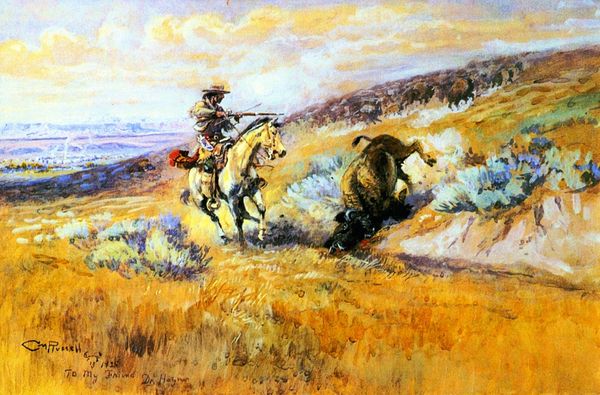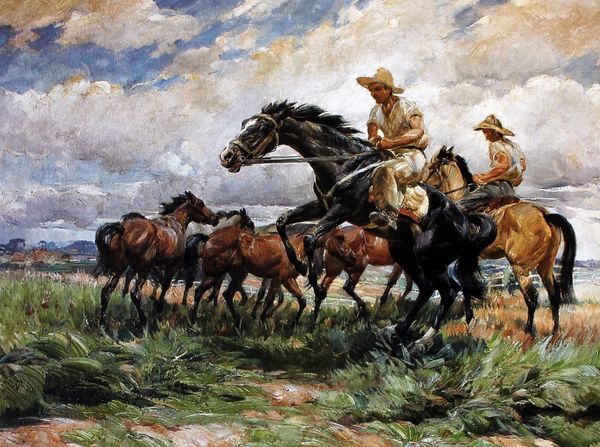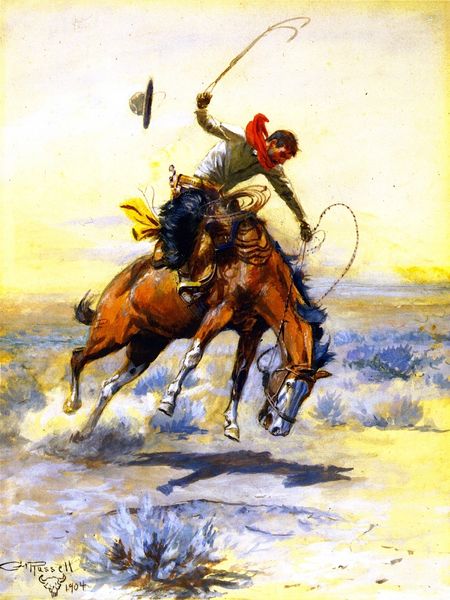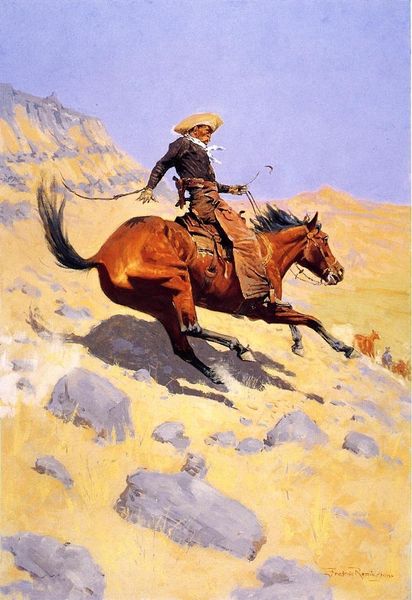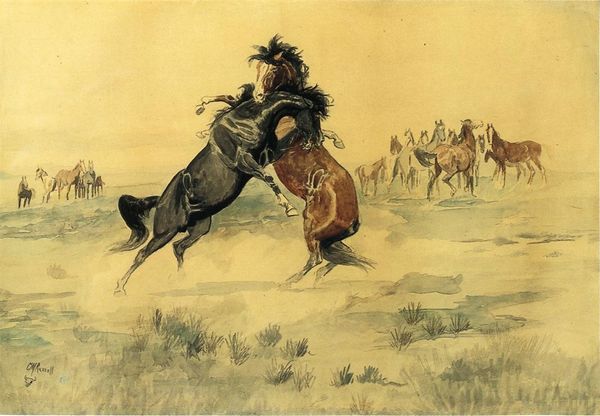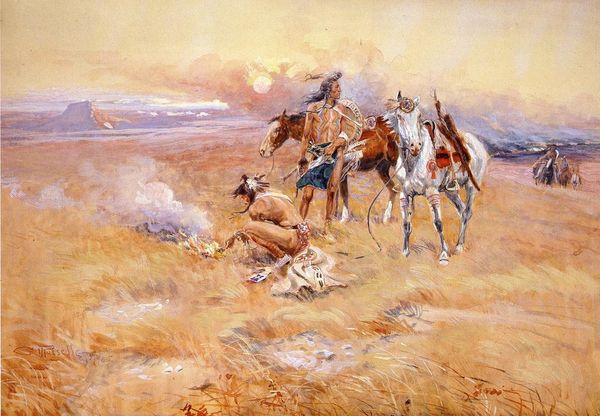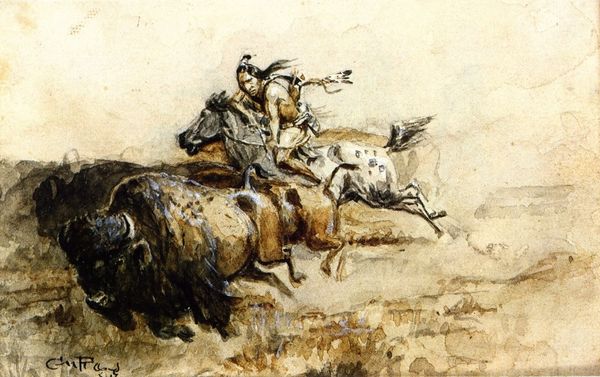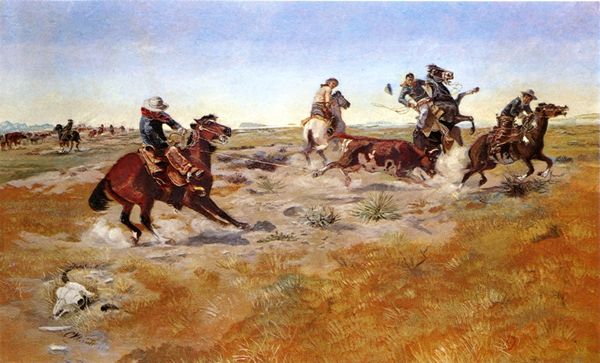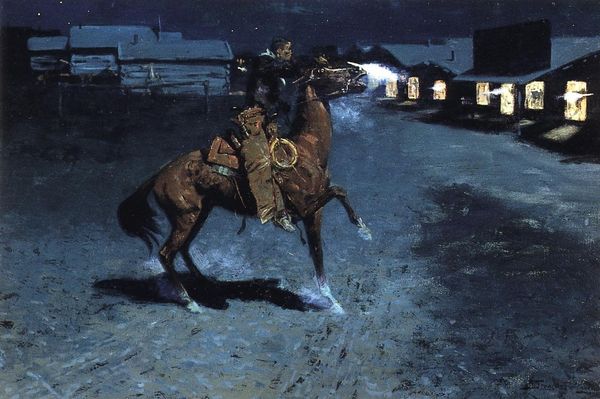
Copyright: Public domain
Curator: Frederic Remington's "Stampede," completed in 1908 using oil paint, plunges us directly into the heart of a chaotic scene in the Old West. The urgency is palpable. Editor: Absolutely. The composition alone evokes a sense of frantic movement; it almost feels like you can hear the thunder of hooves. But I immediately want to ask what historical narratives are being played out here. Is this merely romanticized action, or something more problematic? Curator: It's complex. Remington was deeply invested in depicting what he saw as the "vanishing" West. He valorized cowboys and Indigenous peoples but also, perhaps unintentionally, reinforced certain power dynamics. "Stampede," for instance, positions the cowboy figure as heroically imposing control over nature, here represented by the frightened cattle. Editor: I'm struck by how that romanticized, heroic vision erases a lot of the realities of labour. The cowboy is mythologized but often comes from subjugated classes himself and takes part in suppressing Indigenous rights, therefore it begs the question of for who the “hero” is acting for, when we read a painting. Also, the implied dominance of "civilization" over the natural world becomes tied to exploitation. The political implications are hard to ignore. Curator: You raise an excellent point. Considering Remington's position in the art world and broader society, it’s hard not to see those biases reflected here. Think, also, of the concept of Manifest Destiny which justified westward expansion. Works such as Stampede played a role in visually shaping and promoting that ideology. Editor: And speaking of visuals, note how he contrasts the blurry backdrop with the detail of the main figures in the foreground. Even the looming storm acts as a device that sets the stage for this romanticization of the West. I keep questioning, though: At whose expense did this vision emerge? Curator: Right. While seemingly depicting raw power, Remington’s technique contributes to crafting a very specific *narrative*. It really serves to underline just how visual culture can shape historical perceptions, something very key to my own analyses. Editor: Precisely. When engaging with "Stampede," it becomes crucial to interrogate not only what Remington shows us, but what is intentionally obscured in service to the social narrative that helped make the nation that it is today. It urges us to look closely at the sociopolitical conditions through art. Curator: Absolutely, viewing the painting this way definitely adds depth to our viewing experience.
Comments
No comments
Be the first to comment and join the conversation on the ultimate creative platform.

